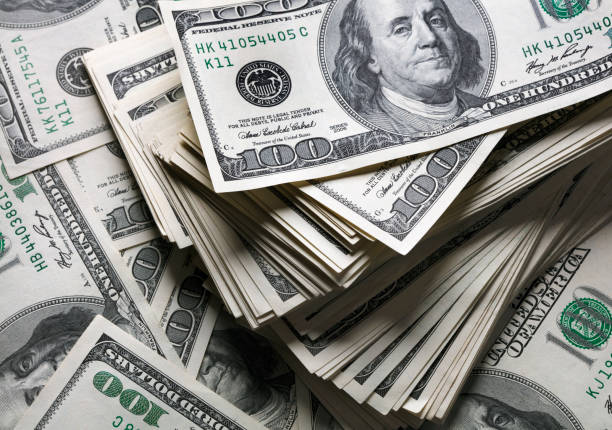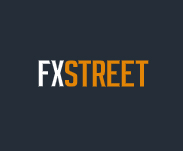
Here is what you need to know on Friday, September 20:
Investors digest the latest central bank announcements to start the last trading day of a critical week for markets. In the second half of the day, the European Commission will release the preliminary Consumer Confidence data for September and Statistics Canada will publish Retail Sales figures for July. Ahead of the weekend, market participants will also pay close attention to comments from central bank officials.
US Dollar PRICE This week
The table below shows the percentage change of US Dollar (USD) against listed major currencies this week. US Dollar was the weakest against the Australian Dollar.
| USD | EUR | GBP | JPY | CAD | AUD | NZD | CHF | |
|---|---|---|---|---|---|---|---|---|
| USD | -0.87% | -1.48% | 0.95% | -0.30% | -1.75% | -1.52% | -0.18% | |
| EUR | 0.87% | -0.68% | 1.81% | 0.53% | -0.95% | -0.67% | 0.65% | |
| GBP | 1.48% | 0.68% | 2.40% | 1.21% | -0.26% | -0.02% | 1.34% | |
| JPY | -0.95% | -1.81% | -2.40% | -1.24% | -2.62% | -2.42% | -1.19% | |
| CAD | 0.30% | -0.53% | -1.21% | 1.24% | -1.54% | -1.22% | 0.02% | |
| AUD | 1.75% | 0.95% | 0.26% | 2.62% | 1.54% | 0.25% | 1.60% | |
| NZD | 1.52% | 0.67% | 0.02% | 2.42% | 1.22% | -0.25% | 1.37% | |
| CHF | 0.18% | -0.65% | -1.34% | 1.19% | -0.02% | -1.60% | -1.37% |
The heat map shows percentage changes of major currencies against each other. The base currency is picked from the left column, while the quote currency is picked from the top row. For example, if you pick the US Dollar from the left column and move along the horizontal line to the Japanese Yen, the percentage change displayed in the box will represent USD (base)/JPY (quote).
The Bank of Japan (BoJ) announced on Friday that it maintained the short-term rate target in the range of 0.15%-0.25%, as expected. In its policy statement, the BoJ noted that it expect inflation to be at a level generally consistent with the BoJ’s price target in the second half of the 3-year projection period, through the fiscal year 2026. USD/JPY edged slightly lower with the immediate reaction and was last seen trading slightly above 142.00.
Meanwhile, the People’s Bank of China (PBOC), China's central bank, left its Loan Prime Rates (LPRs) unchanged on Friday. With this decision, the one-year and five-year LPRs stood at 3.35% and 3.85%, respectively. Following Thursday's upsurge, AUD/USD stays relatively quiet on Friday and consolidates its weekly gains above 0.6800.
On Thursday, the Bank of England (BoE) maintained its bank rate at 5% as forecast. Early Friday, the UK's Office for National Statistics reported that Retail Sales rose 1% on a monthly basis in August. This reading followed the 0.5% increase recorded in July and came in better than the market expectation of 0.4%. After closing in positive territory on Thursday, GBP/USD continues to push higher in the European morning and was last seen trading at its highest level since March 2022 above 1.3300.
Following a recovery attempt in the early American session on Thursday, the US Dollar (USD) Index turned south and closed deep in negative territory as risk flows dominated the action in financial markets. Early Friday, the USD Index edges lower and was last seen fluctuating near 100.50. Federal Reserve Bank of Philadelphia President Patrick Harker is scheduled to deliver a speech later in the day.
EUR/USD gathered bullish momentum in the late American session and registered gains on Thursday. The pair holds steady and trades in a narrow channel above 1.1150.
After making a technical correction, Gold gained traction and closed above $2,580 on Thursday. XAU/USD continues to push higher early Friday and was last seen trading within a touching distance of the all-time high it set at $2,600 on Wednesday.
Central banks FAQs
Central Banks have a key mandate which is making sure that there is price stability in a country or region. Economies are constantly facing inflation or deflation when prices for certain goods and services are fluctuating. Constant rising prices for the same goods means inflation, constant lowered prices for the same goods means deflation. It is the task of the central bank to keep the demand in line by tweaking its policy rate. For the biggest central banks like the US Federal Reserve (Fed), the European Central Bank (ECB) or the Bank of England (BoE), the mandate is to keep inflation close to 2%.
A central bank has one important tool at its disposal to get inflation higher or lower, and that is by tweaking its benchmark policy rate, commonly known as interest rate. On pre-communicated moments, the central bank will issue a statement with its policy rate and provide additional reasoning on why it is either remaining or changing (cutting or hiking) it. Local banks will adjust their savings and lending rates accordingly, which in turn will make it either harder or easier for people to earn on their savings or for companies to take out loans and make investments in their businesses. When the central bank hikes interest rates substantially, this is called monetary tightening. When it is cutting its benchmark rate, it is called monetary easing.
A central bank is often politically independent. Members of the central bank policy board are passing through a series of panels and hearings before being appointed to a policy board seat. Each member in that board often has a certain conviction on how the central bank should control inflation and the subsequent monetary policy. Members that want a very loose monetary policy, with low rates and cheap lending, to boost the economy substantially while being content to see inflation slightly above 2%, are called ‘doves’. Members that rather want to see higher rates to reward savings and want to keep a lit on inflation at all time are called ‘hawks’ and will not rest until inflation is at or just below 2%.
Normally, there is a chairman or president who leads each meeting, needs to create a consensus between the hawks or doves and has his or her final say when it would come down to a vote split to avoid a 50-50 tie on whether the current policy should be adjusted. The chairman will deliver speeches which often can be followed live, where the current monetary stance and outlook is being communicated. A central bank will try to push forward its monetary policy without triggering violent swings in rates, equities, or its currency. All members of the central bank will channel their stance toward the markets in advance of a policy meeting event. A few days before a policy meeting takes place until the new policy has been communicated, members are forbidden to talk publicly. This is called the blackout period.
* The content presented above, whether from a third party or not, is considered as general advice only. This article should not be construed as containing investment advice, investment recommendations, an offer of or solicitation for any transactions in financial instruments.







